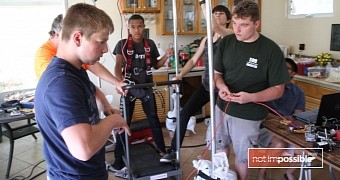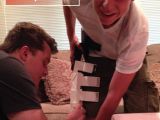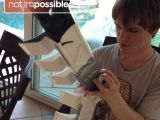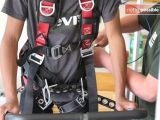The brain is a wonderful thing. It is also likely to cause big problems if it suffers even the slightest amount of damage. Unfortunately, there are too many cases of injuries and illnesses that can inflict such damage.
One such illness, or class of illnesses, is Cerebral Palsy. The disorder inflicts damage to the developing brain while the child is still in the womb or under the age of three.
That damage causes severely impaired control and movement of the body, and lasts a lifetime. Basically, children affected by it rarely get to lead normal lives.
There are around 10,000 infants being diagnosed with Cerebral Palsy every year in the Unites States of America alone.
Seeing this, the Granada Hills High School robotics club decided to come up with an exoskeleton that would restore some of the lost range of motion to those affected by the condition.
The Robot Walker
While it is just a prototype at the moment, the exoskeleton nonetheless works as intended, at least for the most part. Definitely helps those affected to a greater extent than conventional orthotic devices.
It won't replace physical therapy, drugs, surgery, and braces, but it should go a long way towards bridging that last locomotor gap.
The robotics club is composed of the following people: Joel Simonoff, Jake Mattinson, Sabir Muhammad, Travis Wight, Collin Taylor, Abhe Murthy, Adhikara Budhyhartono, Sidney Son, Ariana Levitt, and Adam Howitt. They have named themselves Not Impossible Now.
Their Robot Walker was created with feedback from Dylan Edwards, phD, PT and David Putrino, PhD, PT from Burke Rehabilitation Center. So you don't need to worry whether or not the young people knew what they were doing.
Made primarily through 3D printing technology, the exoskeleton is attached to the subject's legs and uses four motors, a treadmill, a harness, and an iPad app that lets you control the gait.
Problem solving currently in progress
The current Ame 226-3003 motors aren't really strong enough to cope with the strain, and the Not Impossible Now team also need to find a way to sync the motors' movements better.
Still, their idea has a lot of merit, as they want to enable the Robot Walker to also run if needed, without having to rely on constant iPad messages via Bluetooth.
If the Robot Walker is completed successfully, it should allow patients with Cerebral Palsy to learn how to walk again in a year or so, instead of five. It would also spare patients the cost of the therapy, which is of over $300,000 / €23,300 with a typical gait trainer.

 14 DAY TRIAL //
14 DAY TRIAL // 




